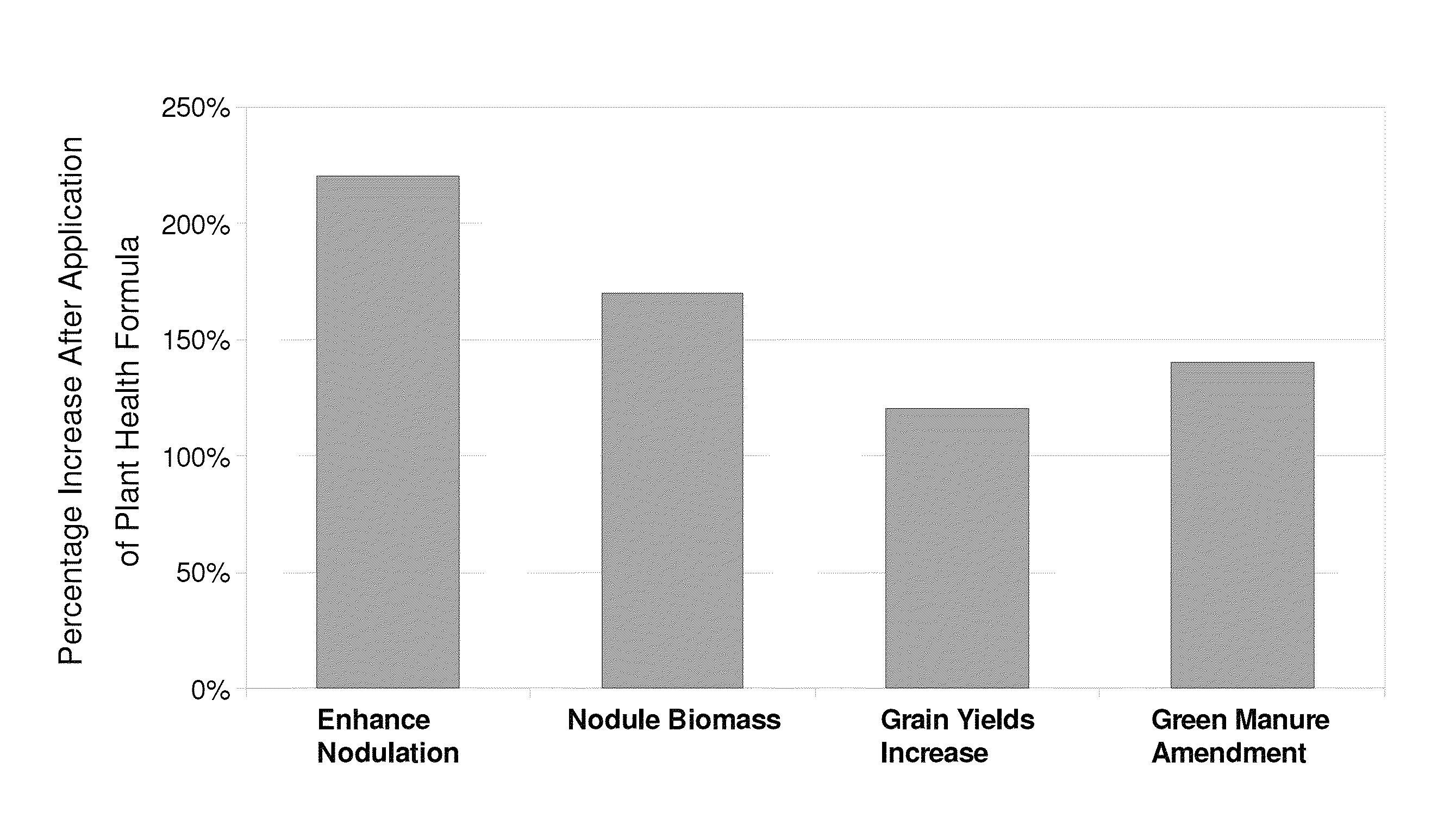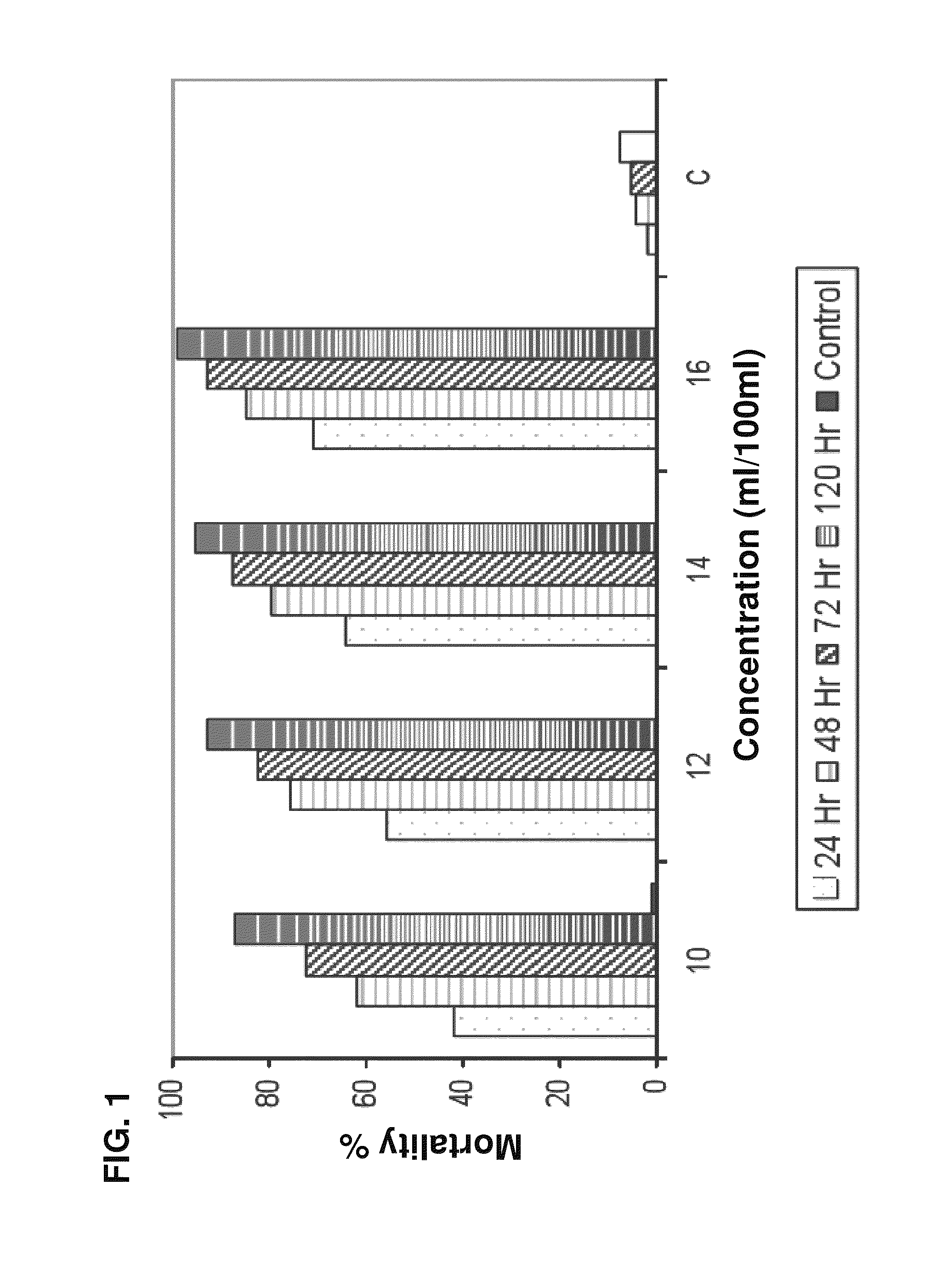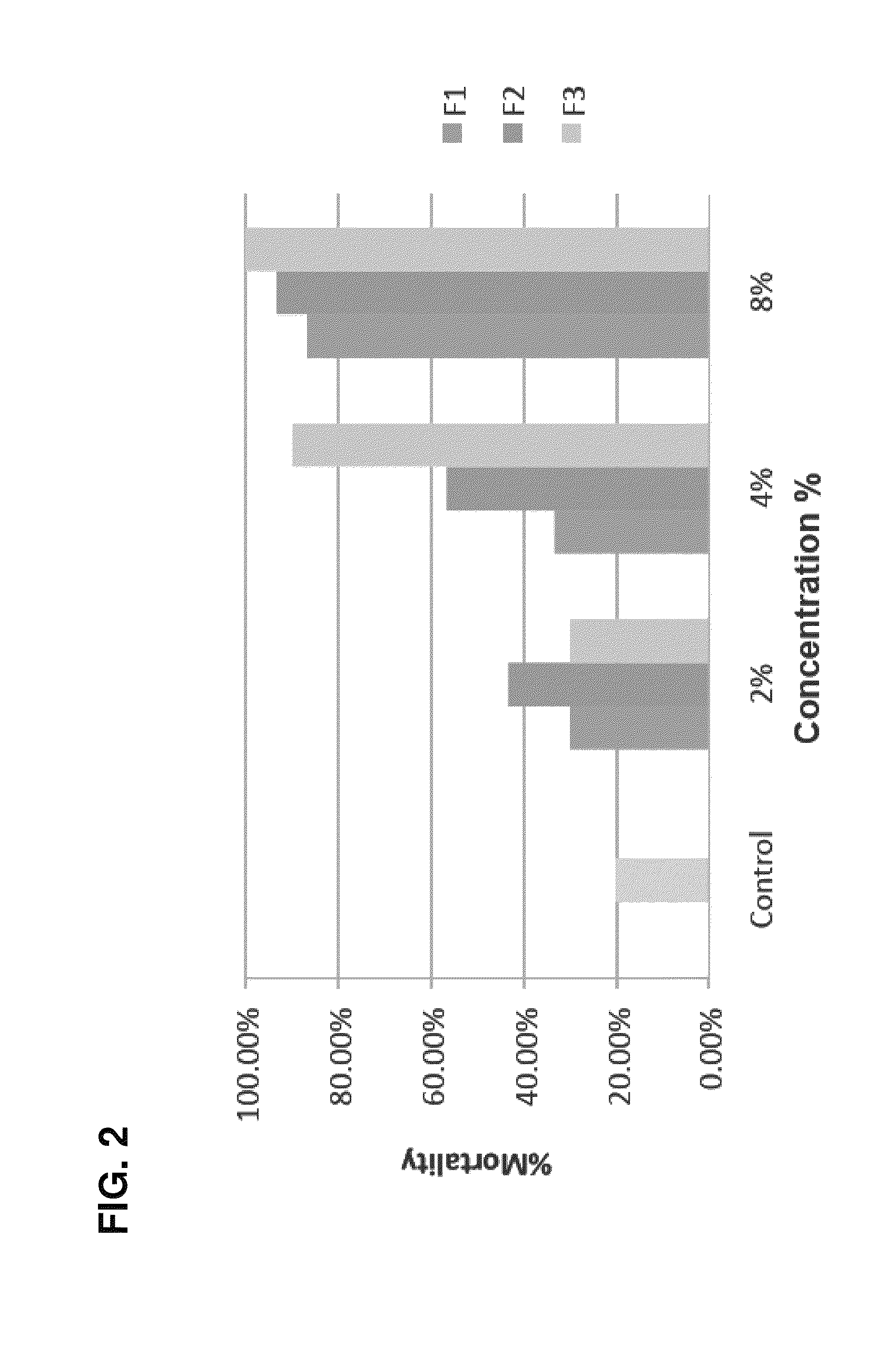Liquid microorganism consortia formulation
a technology of liquid microorganisms and consortia, which is applied in the field of liquid microorganism consortia compositions, can solve the problems of stability, storage, efficiency, and hindering use, and achieve the effect of increasing insect or pest mortality
- Summary
- Abstract
- Description
- Claims
- Application Information
AI Technical Summary
Benefits of technology
Problems solved by technology
Method used
Image
Examples
example 1
PNSB-Enhanced Microorganism Consortium Formulation
[0115]The PNSB-enhanced microorganism consortium formulations used in the Examples herein were made as follows according to Table 1. Purified water was added to a mixing tank. Molasses (Brix 80+5%, pH 5.7+0.5, Sucrose 30+5% or Total Sugar of 75+5%) was added to the water in the mixing tank. The water and molasses were mixed at 30 Hz speed and then SDA-3C, 199.9+0.1 Proof, 95+1% Ethanol, 4.75+0.50% IPA was added to the mix along with vinegar (120+1 Titratable Acidity). Next, mineral powder (0.15% Mg (as MgO), 0.6% Fe, 0.15% P (as P2O5), 3.2% K (as K2O) was added to the mixture. The mixture was pumped into a fermentation tank. A probiotic mix (Bacillus subtilis, Bifidobacterium animalis, Bifidobacterium bifidum, Bifidobacterium longum, Enterococcus lactis, Enterococcus thermophilus, Lactobacillus acidophilus, Lactobacillus bulgaricus, Lactobacillus casei, Lactobacillus fermentum, Lactobacillus plantarum, Rhodopseudomonas palustris, Rho...
example 2
Effectiveness of the PNSB-Enhanced Microorganism Consortium Formulation at Low Concentration on Insect Larvae
[0118]The third instar larvae of various insect species were collected and exposed to different concentrations of PNSB-enhanced microorganism consortium formulation (Example 1). The larvae were exposed to 0.1%, 1.0%, and 3.0% concentrations of PNSB-enhanced microorganism consortium formulation diluted in water. The larvae were exposed for 24, 48, 72, 96, and 120 hours. As shown in Table 3, the PNSB-enhanced microorganism consortium formulation was effective against the third instar larvae of Aedes genus. The mortality rate increased with increasing concentrations of formulation and increasing exposure time.
[0119]
TABLE 3Bioassay data (% mortality) on the third instar larvae of Aedes genus exposed to various concentrationsof PNSB-enhanced microorganism consortium formulation.Concentration24 hours48 hours72 hours96 hours120 hoursControlNilNilNilNilNil0.1%Nil10%20% 30% 50%1.0%Nil...
example 3
Effectiveness of PNSB-Enhanced Microorganism Consortium Formulation at High Concentration on Insect Larvae
[0126]The third instar larvae of Aedes and Culex genus were collected and exposed to various concentrations of PNSB-enhanced microorganism consortium formulation (Example 1). The larvae were exposed to 10%, 12%, 14% and 16% concentrations of formulation diluted in dechlorinated water. The larvae were exposed for 24, 48, 72, and 120 hours. As shown in FIG. 1, the formulation was effective against larvae of Aedes and Culex genus following 24, 48, 72, and 120 hours of exposure.
PUM
| Property | Measurement | Unit |
|---|---|---|
| weight fraction | aaaaa | aaaaa |
| weight fraction | aaaaa | aaaaa |
| weight fraction | aaaaa | aaaaa |
Abstract
Description
Claims
Application Information
 Login to View More
Login to View More - R&D
- Intellectual Property
- Life Sciences
- Materials
- Tech Scout
- Unparalleled Data Quality
- Higher Quality Content
- 60% Fewer Hallucinations
Browse by: Latest US Patents, China's latest patents, Technical Efficacy Thesaurus, Application Domain, Technology Topic, Popular Technical Reports.
© 2025 PatSnap. All rights reserved.Legal|Privacy policy|Modern Slavery Act Transparency Statement|Sitemap|About US| Contact US: help@patsnap.com



